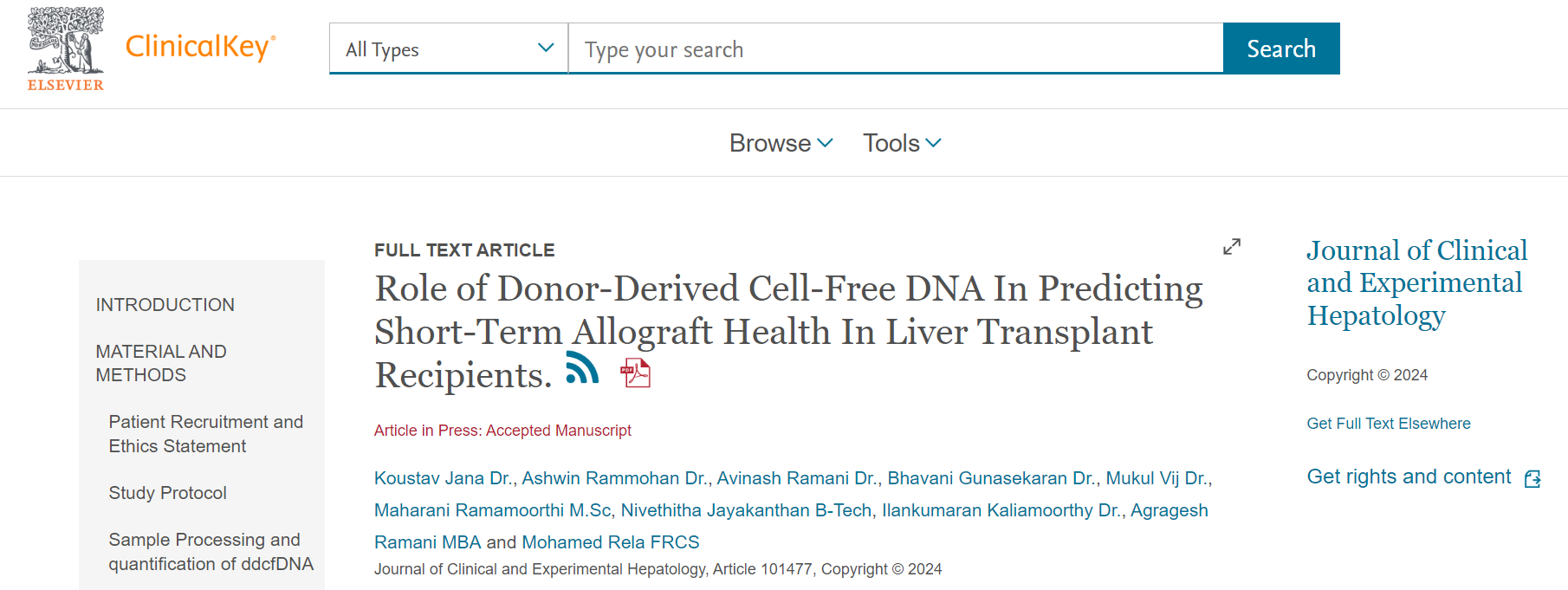- acrannolife_user
- 0 Comments
- 27849 Views

We are thrilled to announce the publication of our latest research, titled Role of Donor-Derived Cell-Free DNA in Predicting Short-Term Allograft Health in Liver Transplant Recipients, accepted in the Journal of Clinical and Experimental Hepatology on June 27, 2024. This study delves into the potential of donor-derived cell-free DNA (ddcfDNA) as a novel biomarker for monitoring liver transplant health, offering new insights into the management and care of transplant patients.
Unlocking the Potential of ddcfDNA
Donor-derived cell-free DNA, a fragment of DNA from the graft genome, has emerged as a promising tool for assessing allograft health. Our research demonstrates that ddcfDNA can play a critical role in predicting and diagnosing graft injury. Beyond this, it provides the potential to monitor how well patients are responding to therapeutic interventions.
One of the most significant findings from our study is that a single-point analysis of ddcfDNA levels on Postoperative Day 7 (POD-7) can provide an accurate prediction of graft health. The results showed:
– 93.33% Sensitivity
– 94.44% Specificity
– 87.50% Positive Predictive Value
– 97.14% Negative Predictive Value
– 94.12% Accuracy
Collaborative Effort
This research is the result of a collaborative effort among leading experts in the field:
– Conception & Design: Koustav Jana, Ashwin Rammohan, and Mohamed Rela played pivotal roles in shaping the study’s framework.
– Data Acquisition & Analysis: Avinash Ramani, Bhavani Gunasekaran, Mukul Vij, Maharani Ramamoorthi, and Nivethitha Javakanthan contributer their expertise to gather and interpret the data.
– Manuscript Drafting & Revision: Ilankumaran Kaliamoorthy and Agragesh Ramani were instrumental in drafting the article and refining it for publication.
– Final Approval: Mohamed Rela provided the final review and approval, ensuring the study’s quality and integrity.
Looking Forward
As we continue to explore the potential of ddcfDNA in transplant medicine, we remain committed to advancing research that improves patient outcomes. This publication marks a significant step forward in our understanding of how to better monitor and manage liver transplant patients, and we look forward to future discoveries in this field.
This format is tailored for a website article, making it engaging and informative for your audience.
To read the full article,
click here